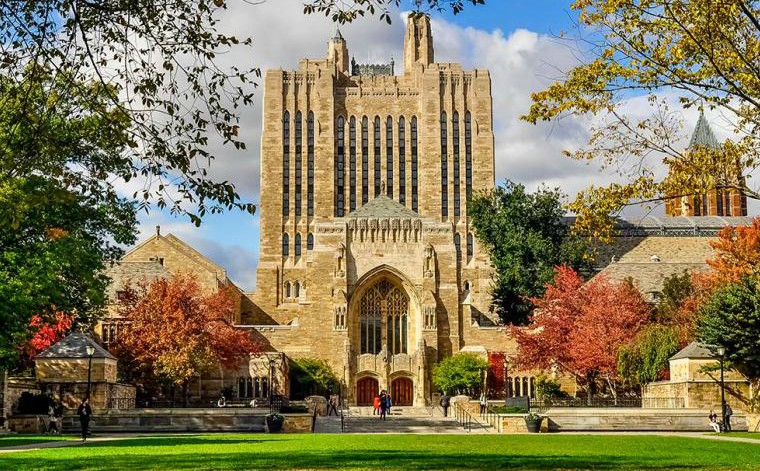About Yale University
Yale College survived the American Revolutionary War (1775–1783) intact and, by the end of its first hundred years, had grown rapidly. The nineteenth and twentieth centuries brought the establishment of the graduate and professional schools that would make Yale a true university. The Yale School of Medicine was chartered in 1810, followed by the Divinity School in 1822, the Law School in 1824, and the Graduate School of Arts and Sciences in 1847 (which, in 1861, awarded the first Ph.D. in the United States), followed by the schools of Art in 1869, Music in 1894, Environment in 1900, Nursing in 1923, Drama in 1955, Architecture in 1972, and Management in 1974. International students have made their way to Yale since the 1830s, when the first Latin American student enrolled. The first Chinese citizen to earn a degree at a Western college or university came to Yale in 1850. Today, international students make up nearly 9 percent of the undergraduate student body, and 16 percent of all students at the University. Yale’s distinguished faculty includes many who have been trained or educated abroad and many whose fields of research have a global emphasis; and international studies and exchanges play an increasingly important role in the Yale College curriculum. The University began admitting women students at the graduate level in 1869, and as undergraduates in 1969. Yale College was transformed, beginning in the early 1930s, by the establishment of residential colleges. Taking medieval English universities such as Oxford and Cambridge as its model, this distinctive system divides the undergraduate population into twelve separate communities of approximately 450 members each, thereby enabling Yale to offer its students both the intimacy of a small college environment and the vast resources of a major research university. Each college surrounds a courtyard and occupies up to a full city block, providing a congenial community where residents live, eat, socialize, and pursue a variety of academic and extracurricular activities. Each college has a master and dean, as well as a number of resident faculty members known as fellows, and each has its own dining hall, library, seminar rooms, recreation lounges, and other facilities. Today, Yale has matured into one of the world’s great universities. Its 11,000 students come from all fifty American states and from 108 countries. The 3,200-member faculty is a richly diverse group of men and women who are leaders in their respective fields. The central campus now covers 310 acres (125 hectares) stretching from the School of Nursing in downtown New Haven to tree-shaded residential neighborhoods around the Divinity School. Yale’s 260 buildings include contributions from distinguished architects of every period in its history. Styles range from New England Colonial to High Victorian Gothic, from Moorish Revival to contemporary. Yale’s buildings, towers, lawns, courtyards, walkways, gates, and arches comprise what one architecture critic has called “the most beautiful urban campus in America.” Yale's West Campus, located 7 miles west of downtown New Haven on 136 acres, was acquired in 2007 and includes 1.6 million square feet of research, office, and warehouse space that provides opportunities to enhance the University’s medical and scientific research and other academic programs. The University also maintains over 600 acres (243 hectares) of athletic fields and natural preserves just a short bus ride from the center of town. |

